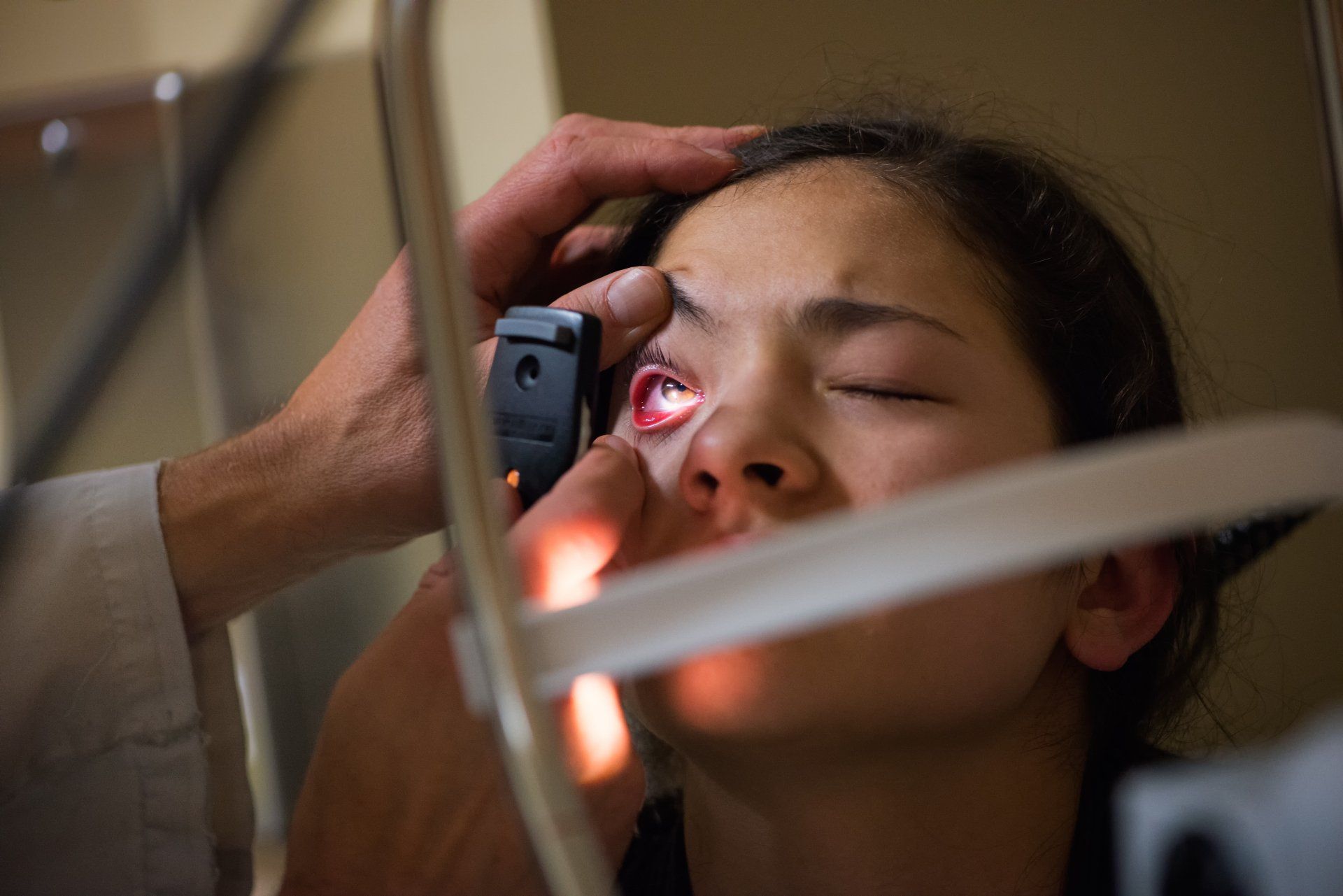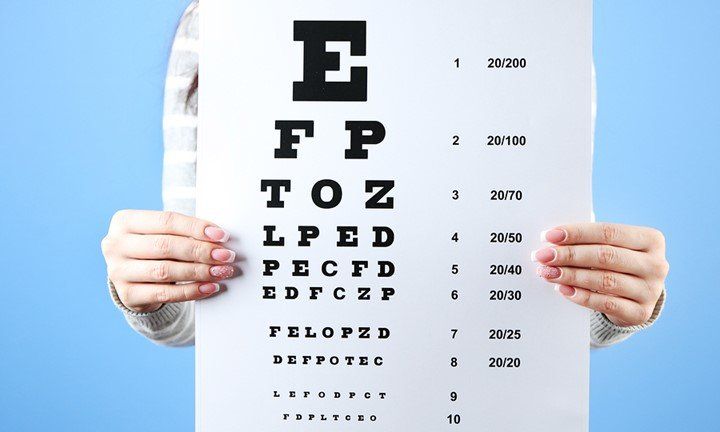Eye Care
Your Safe Place In Eye Care
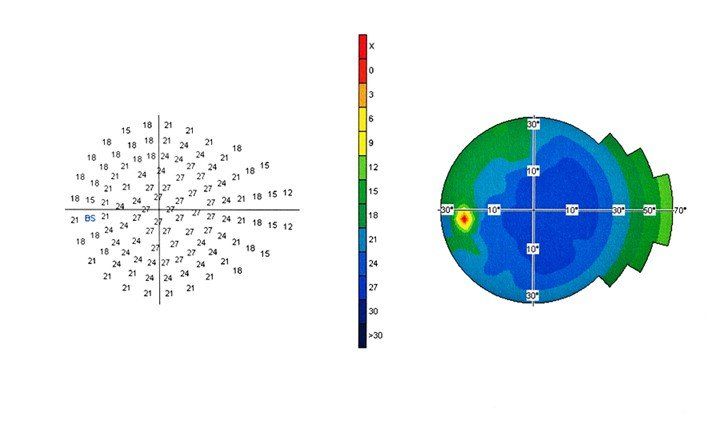
By Admin
•
19 May, 2015
A visual field test is an eye test that measures your entire scope of vision, that includes your central and peripheral (side) vision. Visual field testing provides a map of each eye individually. Visual field testing is used to detect any signs of glaucoma damage to the optic nerve. In addition, visual field tests are useful for the detection of diseases affecting the visual pathways within the brain. At The Optical Shop Campbelltown, we usually do a Visual field test after your eye examination. The visual field test is conducted using a piece of equipment called a visual field screener (sometimes known as an auto-perimeter). During the test you will need to look at a little green spot in the centre of the machine (to keep your eye still) a light will then flash to sign that the photo has been taken. There are two ways of doing the visual fields test: Static Test This is where the target or the little green dot doesn’t move.The most common sort involves you responding when you see a quick flash of light. This light flashes very quickly because otherwise you would be tempted to look towards it. The flash of light can be anywhere in your field of vision but it is important that you keep looking at the central green spot and not search for the target lights. Sometimes you will be asked how many flashes of light you see and at other times you will only be asked whether or not you see a light. At the beginning of the test you may not be able to see any flashes of light at all. This is because the lights are too faint to see. The lights are then made brighter until you can see them and the level of brightness is recorded to show how sensitive your visual field is. In another version of this test, parts of the visual field are made to ‘shimmer’ and you will be asked which areas shimmer. Kinetic Test This is where the target is moving. The green spot of light is moved from outside your visual field towards the central spot and you will be asked to indicate immediately when you see the spot of light. This test is often repeated using different sized spots of light. It can be difficult for you to keep looking at the central spot whilst being asked what you see around it and you might find the test quite tiring. It sometimes takes several attempts at the visual field test before you fully understand how to do the test. For this reason your optometrist may ask you to come back on a different occasion to repeat the test. This does not necessarily mean that you have something wrong with your visual field; it shows that your optometrist wants to get the best possible results from the test. Would you like to book your visual field test?
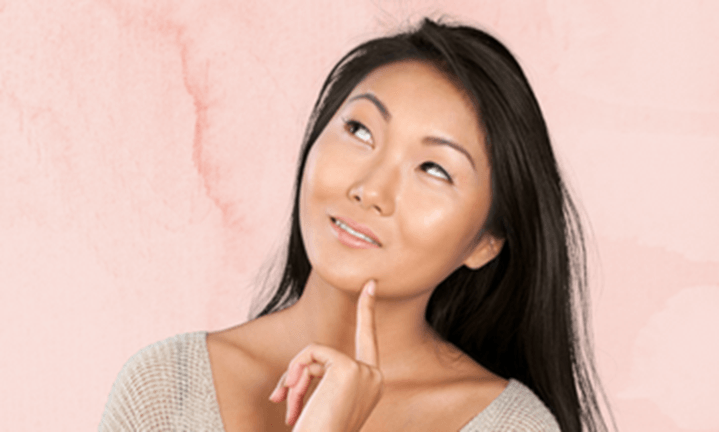
By Admin
•
19 May, 2015
Whether functional or fashionable, generic or designer, having 'four eyes' has never looked so good! With such a vast array of eyewear accessories in the market today your options are endless. But thats just the problem - we have so many options that buying in store is a juggling act and attempting an online purchase without trying them on becomes a game of pot luck. The reality is EVERYONES FACE IS UNIQUE! We all have different skin tone, eye colour and hairstyles making a certain frame look great on one person and not not so good on another. You also have to take into account your age, personality and eye prescription. But making sure that your face furniture doesn't clash with its surrounds is all about balance, and there is one steady factor that can help decode which frame will suit you best - FACE SHAPE. Generally speaking there are 5 main shapes to work with SQUARE, ROUND, OVAL, HEART and OBLONG. Understanding face shape basics will make buying accessories for your peepers so much easier, so here goes... SQUARE: Angular, hard lined proportions with well defined features. Generally the appearance of your face has an almost equal height to width ratio with a broad forehead, wide cheekbones and a wide chin. TIPS: Glasses with a slightly oval shape will soften angular features. Avoid hard lined frames as it can make your face appear boxy, though if you do choose to get a squarer frame, look for ones with rounded edges that sit wider than broadest part of your face. This will soften your features and balance facial proportions. OVAL: Top and bottom of face are well balanced, longer length, typically with higher cheekbones and a chin that is a little narrower than the forehead. TIPS: Oval headers should rejoice because pretty much any style except extreme geometric designs are for you! Round shapes make your face softer whilst angular shapes will make your face look a little harder. Generally speaking most sized frames will maintain the balance of your oval shape so long as they are at least as wide as the broadest part of your face. Try to avoid frames with low temples as they can detract from your natural features. ROUND: Broad full face with a larger curved forehead, rounded chin and soft angles. Little or no definition overall. TIPS: Go for more square or angular shaped frames with bold side edges and higher, coloured temples. Such design choices will help to lengthen your face and contrast your rounder soft features. HEART: A heart shaped face will have a forehead that is the widest part of face, high cheekbones, and a narrower slightly pointed chin. TIPS: Like oval shaped faces, heart shaped headers really can experiment with a lot of different frames with rimless or light coloured designs suiting you the best. Such frames will draw the most attention to your eyes and will also offset the width of your forehead and pointy chin. Frames that widen at the bottom rather than across the temples or those with strong or heavy top edges are best avoided. OBLONG: Narrow face with more length than width. Angular proportions with straight cheek lines and a well defined chin. TIPS: Larger curved frames which are deeper than they are wide will shorten the appearance of an oblong face and relax any sharp lines. Frames with decorative temples are great as they add width to the face. Help! I'm not sure where I fit in... Ok stop and breath. There are variations with every body part and you don't need to freak out if your face doesn't perfectly fit into one of the categories described above. Instead choose the one that most closely resembles your face and work with it, taking tips from a couple of different shapes if need be. Remember there are no hard and fast rules here. To trend or not to trend... If buying in store listen to the sales assistant, they should give you an honest objective opinion. Better still bribe your mum, friend or partner with a coffee and cake date and take them along for the ride. If you find yourself on your own, don't be afraid to take some selfies to get their thoughts but regardless of what they say, never be talked into something your not going to be happy wearing. Your specs should reflect YOUR personality, there's no point in buying wild cat eye frames if you're too shy to wear them with confidence! Take into account whether you tend to be more classic, conservative or crazy, but ultimately it's up to you how much of a statement you want your glasses to make. Comfort comes first... Above and beyond winning the fashion stakes is the comfort and fit of your frames. Poorly fitting specs can press into the side of your temples or slip off your face causing you to adjust them constantly throughout the day. Even worse if they are too large, too small or just not sitting correctly they can lead to headaches and poor vision. Always stop and weigh up, is it really worth the grief? If all else fails, buy a more neutral frame that fits comfortably and save your experimenting for a different "on-trend" fashion accessory instead. And last but not least... Remember - they are only glasses! Don't get overwhelmed, relax and enjoy the buying process. Narrow your choices down to a handful of frames using the face shape tips and and before you know it your eyes will be thanking you for the clearer vision from specs that fit well, complement your personality and make you look great.
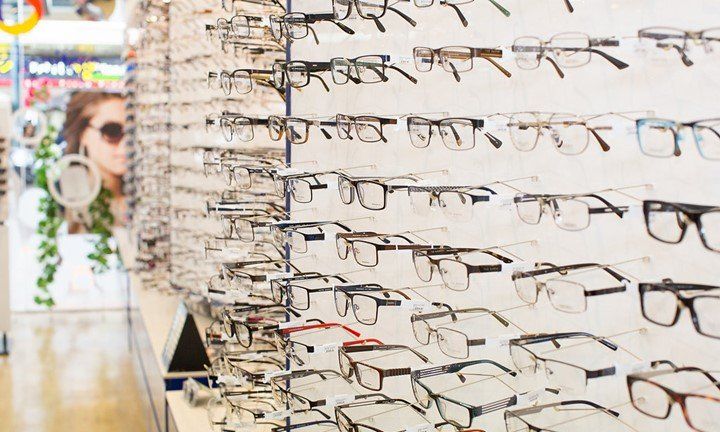
By Admin
•
07 May, 2015
Eye Exam Reason #1: Dry Eyes Dry eye symptoms are one of the top reasons people go to the eye doctor. There have been significant advancements in the diagnosis and treatment of dry eye, – get them checked out by your eye doctor. Eye Exam Reason #2: Digital Eye Strain In today's world, just about everything we do involves a screen: Our use of digital devices has changed one of the basic functions of our eyes: how we blink and blinking is essential to the health of your eyes. Eye Exam Reason #3: Sun Damage Every day we are exposed to UV sun rays. While sun damage is more closely linked to skin cancer, the threat to your eyes is just as significant. Wearing UV-blocking sunglasses is important. Your annual eye exam screens for the potential risks from sun exposure including macular degeneration and cataracts. Eye Exam Reason #4: Allergies Anyone who suffers from hay fever and other allergies knows how vulnerable the eyes are to the burning, itching, redness, and general irritation. Managing those symptoms is best done with a eye doctor. Eye Exam Reason #5: Vision Correction Vision problems, nearsightedness, farsightedness, or astigmatism, need routine check-ups with your eye doctor. Your doctor needs to see you to make sure everything is functioning normally and that your tear film and eye are healthy.
Content, including images, displayed on this website is protected by copyright laws. Downloading, republication, retransmission or reproduction of content on this website is strictly prohibited. Terms of Use
| Privacy Policy

